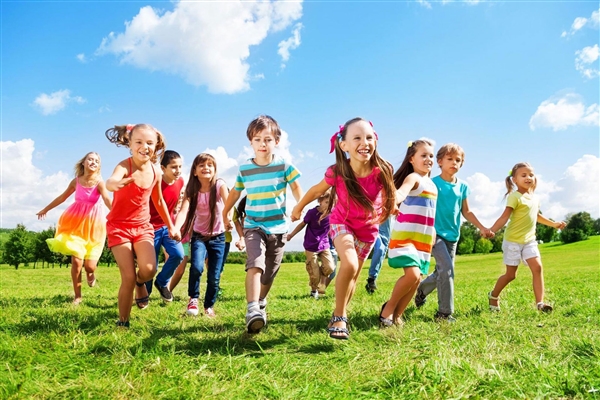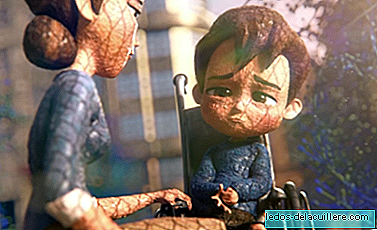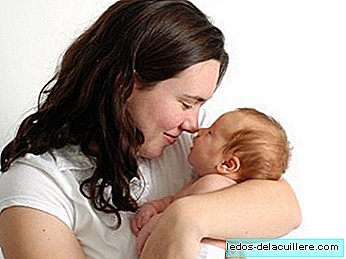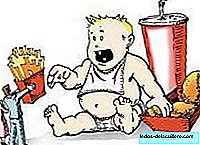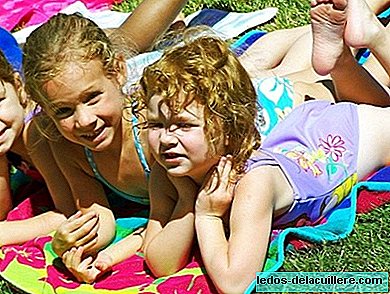
We all know of the need to protect our children's skin from the harmful effects of the sun. In matters of sun and children, prevention is undoubtedly our best weapon but sometimes, despite our best intentions, it is possible that some of our children will burn in the sun. Before sunburn in children and babies we must know what to do and what remedies to use.
Before entering into the subject it is worth remembering how much and how we should protect the skin of our little ones since proper protection of the skin in childhood reduces the risk of skin cancer in the future.
How to recognize a sunburn?
A sunburn is the redness of the skin after sun exposure or other type of ultraviolet light.
The symptoms of a sunburn depend on the severity of it. A slight burn appears as a reddening of the skin that is also warm to the touch. It may be accompanied by pain and / or itching in the affected area.
If the burn is more severe, more severe pain, tingling, swelling, blistering, skin rash, headache, nausea, vomiting, dizziness, fever and chills may occur.
If your child has any of the symptoms of a severe burn or if the affected surface is very large, that is, the child has a large part of the body burned, it is necessary to see a doctor as soon as possible so that he can assess the severity of the disease and establish the most appropriate treatment to follow.
The symptoms and effects of burns may take up to six hours to present and are more acute within 24 hours of sun exposure. Several days later the skin may start to peel.
What to do if our child burns in the sun?
The first thing before a sunburn is remove the child from the sun. It is not enough to apply more protection, you have to end the day at the beach or pool and take the child to a protected and cool place.
Next you have to shower or bathe the child in fresh water, not too cold and never hot. Is better do not use soap as it can increase skin irritation.
Wet compresses can also be applied as often as necessary to relieve the child.
The skin should not be rubbed to dry but give slight blows with the towel so as not to irritate the skin anymore.
A child who has suffered a sunburn has a higher risk of suffering from dehydration, so it is important that drink plenty of fluids for two to three days after sunburn. Water should always be our first option to hydrate our children.
If the child has a lot of pain, ibuprofen may be given at the recommended doses. If there is a lot of inflammation, it is also possible for the pediatrician to prescribe a cream with hydrocortisone.
Once the heat and redness of the skin begin to remit they can be apply moisturizing lotions.
We must likewise dress the child with cotton clothes that are not too tight so they do not rub reddened skin. Avoid wool and synthetic materials on the affected skin.
What are the best remedies against sunburn?
There are some remedies that can help alleviate the effects and discomfort of sunburn.
Yogurt has soothing properties They help reduce burning. After the fresh shower we can apply cold, natural and unsweetened yogurt on the burned skin for fifteen or twenty minutes.
Other dairy like Milk can also help relieve symptoms. For that we can apply pads moistened in damp milk on the skin for half an hour and repeat every two or four hours during the hours after solar overexposure.
As for the moisturizing lotions that we can apply, it is important that they do not contain benzocaine, lidocaine or petrolatum. It is also not convenient to apply local anesthetics.
Creams or with vitamin E or Aloe Vera will be our best allies since in addition to moisturizing and refreshing they will help in the regeneration process of damaged skin.
We can also contribute to the cellular regeneration of the child's skin by giving Vitamin A-rich foods such as carrots, broccoli, milk and cheeses.
When should we see a doctor?
Call a doctor immediately if the child
- It is less than one year old.
- You have an extremely painful or blistering burn. In no case should the blister burst as we would expose our children to infection.
- Your face or hands are swollen as a result of sunburn.
- It has a large part of the burned body.
- You have a fever or chills.
- You have a headache, are confused or dizzy, or have passed out.
- You have symptoms of dehydration such as thirst or dry eyes and mouth.
- You have eyes affected by the sun. If they are watery, red and swollen, they should be seen by a doctor.
After a sunburn what to do the rest of the summer?
It is important that burned skin does not expose itself to the sun until completely regenerated and no symptoms of burn. For this, a sunscreen is not enough, no matter how high the protection factor. We must resort to physical methods of protection such as hats and appropriate clothing.
If the burn has been severe, it may take three to six months for the skin to regenerate during this period, it is desirable that the skin is not exposed to the sun at any time.
And above all prevent, prevent and prevent more since after a sunburn it is easier for the child to burn again.
In addition, since 90% of sunburn in children occurs under the supervision of their caregivers, it is important that we know what to do and what remedies to apply to a sunburn in children or babies.




